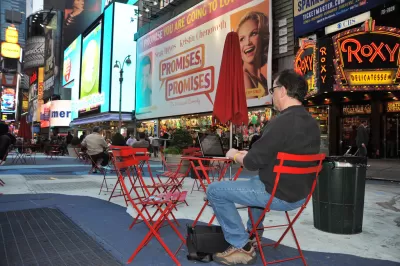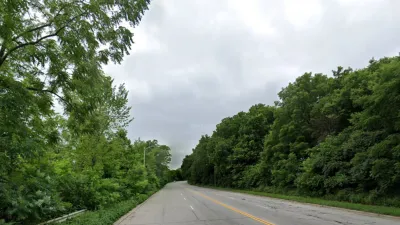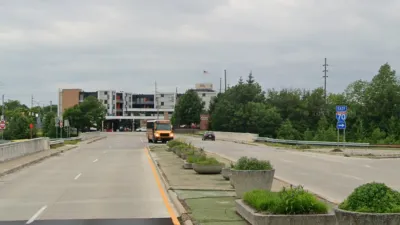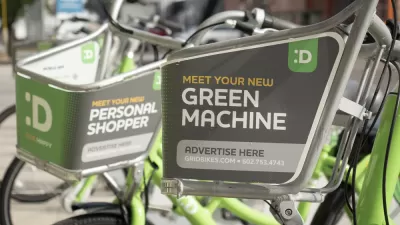A review and summary of Janette Sadik-Kahn's "Street Fight: Handbook for an Urban Revolution," by Bay Area architect and environmentalist Todd Jersey.

The short version of how Janette Sadik-Khan and her team transformed New York City streets to make them more bike and pedestrian friendly is that they: 1) started small, and built on the success of each project; 2) used creativity, planning, and paint, rather than construction and expense; and 3) researched, used data, and were tireless in their efforts to convince businesses, residents, and representatives to give the projects a try. In a review and summary of Sadik-Khan's book about her experience, Bay Area architect and environmentalist Todd Jersey writes:
. . . as those of us in the trenches of reclaiming the public realm from car dominance know, the loudest voices of resistance are owners of street-facing (mostly) small businesses. Sadly, these business owners cling to the old idea that shoppers come by car and that any changes to how cars move and park have a negative impact on sales. The book tells a different and important story (which Sadik-Kahn counsels we must know well in order to educate others). That is, contrary to the decades-old popular belief, it’s pedestrians (and now bicyclists in increasing numbers) that drive sales to street-level businesses, not drivers of cars. There is now an ever-increasing amount of research that demonstrates conclusively that changes to our streets which support bike and pedestrian activity have a profoundly positive impact on street-level businesses.
Jersey also summarizes several of her projects, and notes that this type of "rebalancing" of streets is not only important to making urban environments more pleasant and equitable, but is critical for saving thousands of lives each year lost to car vs. pedestrian collisions. If you've been wondering whether to read Sadik-Khan's book, start with Jersey's review.
FULL STORY: How Sadik-Khan clawed back the streets of NYC for walkers and bikers – book review

Planetizen Federal Action Tracker
A weekly monitor of how Trump’s orders and actions are impacting planners and planning in America.

San Francisco's School District Spent $105M To Build Affordable Housing for Teachers — And That's Just the Beginning
SFUSD joins a growing list of school districts using their land holdings to address housing affordability challenges faced by their own employees.

The Tiny, Adorable $7,000 Car Turning Japan Onto EVs
The single seat Mibot charges from a regular plug as quickly as an iPad, and is about half the price of an average EV.

Seattle's Plan for Adopting Driverless Cars
Equity, safety, accessibility and affordability are front of mind as the city prepares for robotaxis and other autonomous vehicles.

As Trump Phases Out FEMA, Is It Time to Flee the Floodplains?
With less federal funding available for disaster relief efforts, the need to relocate at-risk communities is more urgent than ever.

With Protected Lanes, 460% More People Commute by Bike
For those needing more ammo, more data proving what we already knew is here.
Urban Design for Planners 1: Software Tools
This six-course series explores essential urban design concepts using open source software and equips planners with the tools they need to participate fully in the urban design process.
Planning for Universal Design
Learn the tools for implementing Universal Design in planning regulations.
Smith Gee Studio
City of Charlotte
City of Camden Redevelopment Agency
City of Astoria
Transportation Research & Education Center (TREC) at Portland State University
US High Speed Rail Association
City of Camden Redevelopment Agency
Municipality of Princeton (NJ)





























